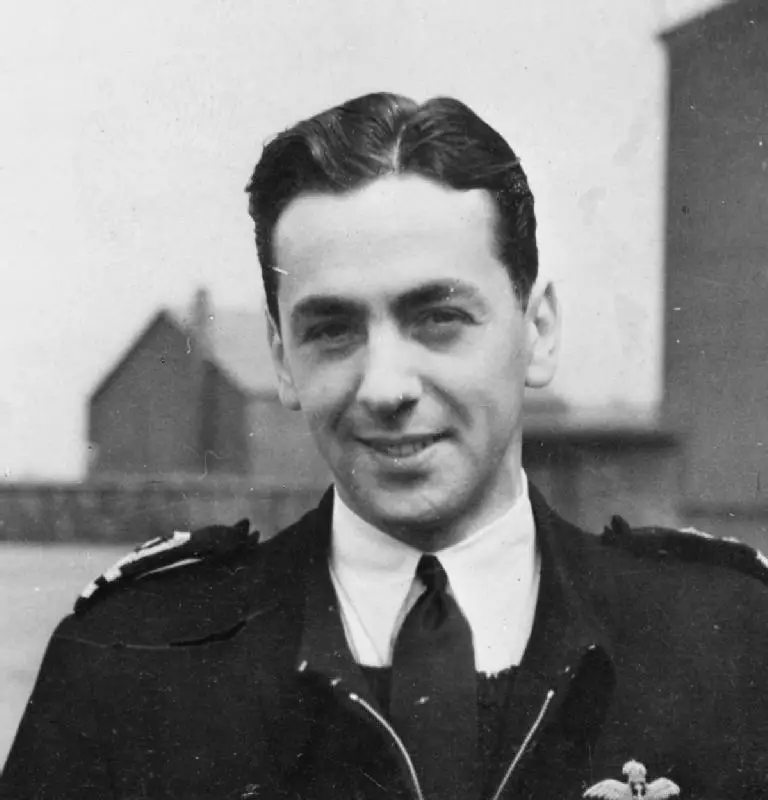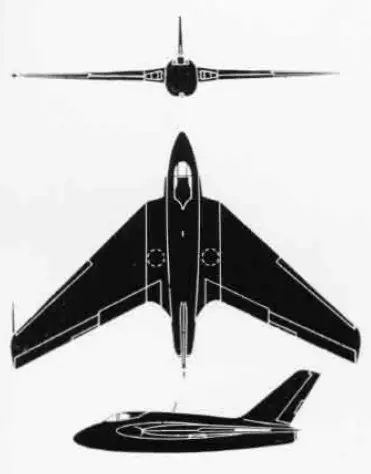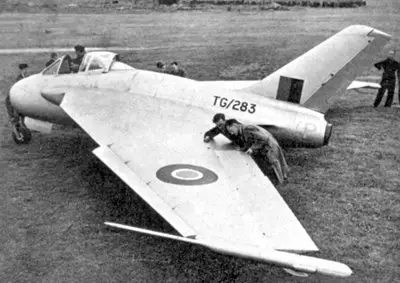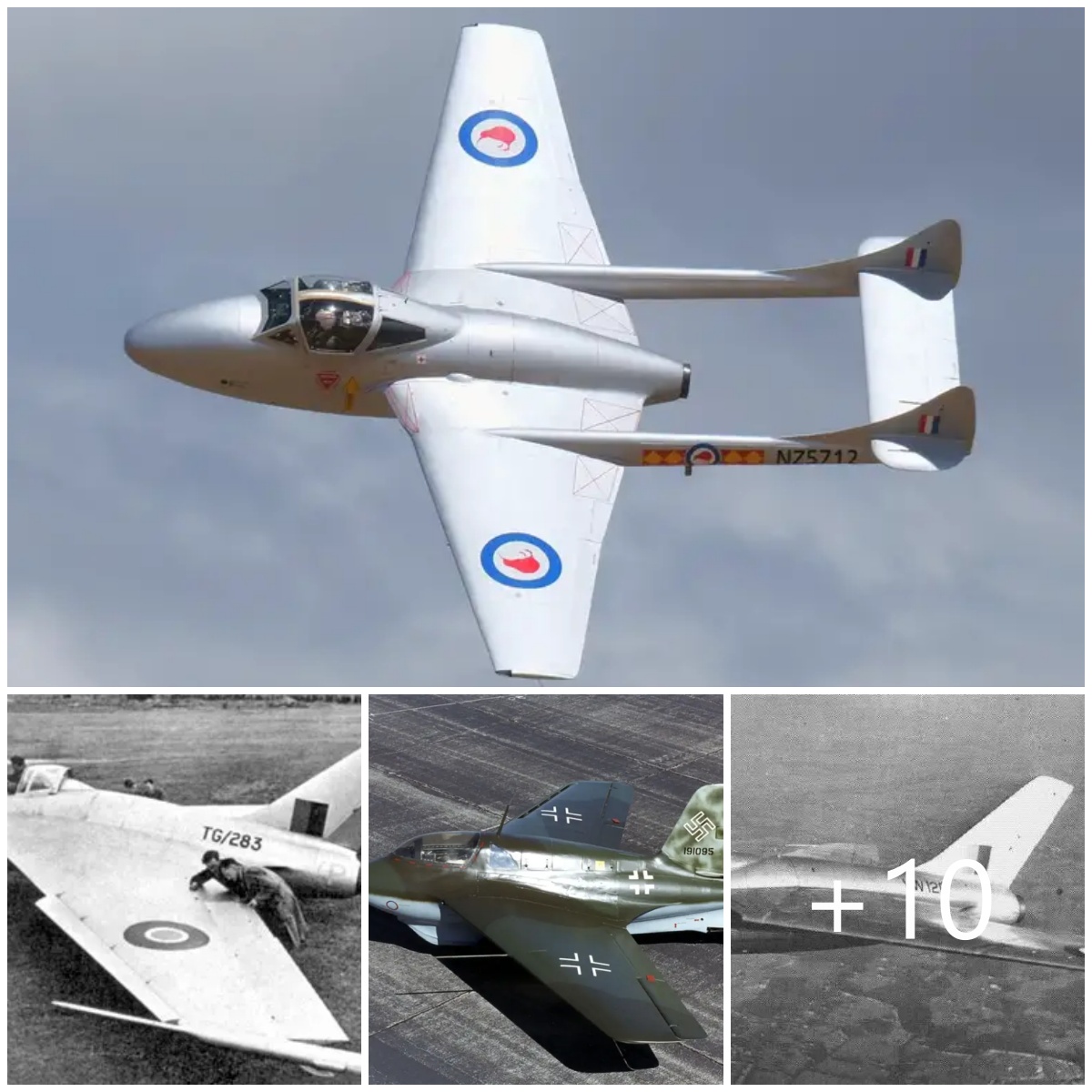De Havilland DH 108 Swallow – Deadly Delta
The de Havilland DH 108 “Swallow” was an experimental prototype jet aircraft designed in response to a specification put out by the British Air Ministry. It was intended as a highly advanced, supersonic jet plane and took design elements from the German-made Messerschmitt Me 163 Komet rocket-powered fighter.
Three complete examples of the Swallow were built and all featured a distinctive tailless design. During the proving flights of the DH 108, it soon attracted a reputation as an incredibly fast but potentially dangerous aircraft.
A crash of the second prototype killed renowned test pilot and the son of the de Havilland founder, Geoffrey Raoul de Havilland Jr. All three prototypes were subsequently lost in fatal accidents and no surviving examples exist today.
Despite this, the DH 108 proved itself to be a fast plane when the pilot was able to control it and supplied useful information for future de Havilland projects.
The origins of the DH 108 began with an air specification issued by the British Air Ministry calling for the development of an experimental, single-engine and single-seat jet aircraft that could be used as a test bed to research and study the effects of a tailless aircraft design.
The specification calls were also focused on increasing the speed of jet aircraft and seeing how a tailless plane would handle at both high and low speeds.
The British-based de Havilland aerospace company had begun work and research on a jet design under the leadership of aerospace designer John Carver Meadows Frost.
The de Havilland company had already researched tailless designs for initial drafts of their Comet jet airliner, although the production model Comet would ultimately go on to feature a more conventional plane design once it entered commercial service. Instead, Frost transferred some of the Comet’s original features onto his new jet fighter prototype.
Frost also drew many of his ideas heavily upon the German-made Messerschmitt Me 163 Komet rocket jet which featured a tailless, swept wing configuration.
While the Me 163 had not been successfully deployed in time to make much of a difference to the German war effort, it had broken several design boundaries, including becoming the first fighter aircraft to reach 620 miles per hour in level flight and to date, the only rocket-powered fighter aircraft to be constructed and successfully flown.
Frost took elements of the Komet combined with his own research at de Havilland and began work on the new aircraft.
Development
The design work began in 1944 by initially taking the forward fuselage section and the existing de Havilland-built Goblin jet engine from the de Havilland Vampire jet fighter.
As the design process continued over the next two years, de Havilland also took two airframes from the English Electric variant of the Vampire and kept the cockpit and nosecone. The Goblin engine remained, however.
Frost and his team continued to draft and experiment with the design features until eventually, the finished result had a more streamlined nose and cockpit than the original Vampire design. The cockpit canopy was also reinforced in anticipation of the high speeds the plane would experience in the air.
The new prototype earned the nickname Swallow from members of the Air Ministry, although it was not typically referred to as such by its designers, it has stuck in popular discourse.
Three Swallow prototypes were produced in total at de Havilland’s plant in Hatfield, England.
Each had a wingspan of 39 feet and a weight of around 8,940 pounds. The designs predicted the aircraft could have a projected top speed of around 677 miles per hour and a predicted range of 730 miles.
The first DH 108 prototype completed its maiden flight on the 15th of May 1946 at RAF Woodbridge in Suffolk, England. It was piloted by Geoffrey Raoul de Havilland Jr, the son of de Havilland founder Geoffrey de Havilland.
The initial test flight was to test the plane’s handling at a low speed and de Havilland Jr found that the speed was lower than predicted at 280 miles per hour. The second test flight took place during an airshow held by the Society of British Aerospace Companies in which more attention was paid to the speed issues.
Early wind tunnel tests of the DH 108 also indicated potentially unwieldy behaviour from the plane in midair when put into a dive or flown at extremely high speeds, but test pilots anticipated this and decided initially to adjust their flying of the plane accordingly should its performance indicate any problems.
The de Havilland designers decided to try rectifying some of these problems in later speed tests by fitting a new landing gear to ease limitations on the fuselage.
More redesigning and modifications were applied to the second Swallow prototype. Its wings were swept further, new slats from a Handley Page aircraft design were fitted and the power plant was updated to a new Goblin turbojet unit.
The pilot’s seat was lowered to make the canopy smaller and the nose was streamlined. The second prototype was submitted for proving flights with the serial number TG306.
However, the tragedy began to strike the project when the second DH 108 was sent for its proving runs.
The second prototype was once again flown with de Havilland Jr at the controls but during a test flight on the 27th of February 1946. However, the flight ended in tragedy when the plane broke apart in midair after suffering from a catastrophic structural failure during a dive test.
The aircraft crashed into the Thames estuary, killing de Havilland Jr and his body was recovered ten days later. Investigators determined he would have likely been killed due to the violent and uncontrollable movements of the jet.
A crash investigation was launched and determined that an extreme amount of stress had been placed on the fuselage and wings when the plane had entered Mach 0.9, causing the jet engine to stall and corrupt the aircraft’s performance before the main wing spar cracked and fell apart.
A third prototype with the serial number VW120 was built at the Hatfield plant and was mostly based on the updated Vampire design. It maintained the Goblin engine again, upgrading to the more powerful Goblin 4 unit that could produce up to 16.67 kN worth of thrust and enable the DH 108 to reach supersonic speeds. However, the nose and fuselage were further streamlined. The structure and canopy were reinforced, and the cockpit was again made smaller to ensure more aerodynamic qualities.
The third prototype completed its maiden flight in July 1947 under former Second World War ace John Cunningham who had also worked as a test pilot on the Comet airliner. The third prototype flew successfully without incident in initial tests.
In 1948, the designers sought to break the airspeed record using the DH 108 and it was readied for an attempt at breaking the record in April 1948. The aircraft succeeded in breaking two records, reaching 604 miles per hour and again when it broke the sound barrier during a dive under the control of test pilot John Derry.
However, test pilots continued to have misgivings about the DH 108’s safety and handling, with RAF pilot Eric Brown infamously referring to the aircraft as a “killer” after performing dive tests in it.

Brown noted that the aircraft handled well during conventional flights, but when the speed was increased or it was put into a dive, the DH 108 would shake about violently after entering an uncontrolled oscillation and sometimes physically injure or potentially incapacitate the pilot as they tried to control it.
Nonetheless, test pilots continued to achieve milestones flying the DH 108. It won third place in the Society of British Aircraft Constructors Challenge Trophy Air Race and was showcased at the Farnborough Air Show in 1949.
The airframe was then handed over to the British Ministry of Supply, a government agency set up to provide resources for all branches of the British armed forces, who sought to continue tests and speed research using the plane.
In February 1950, the DH 108 was handed over to RAF test pilot Stuart Muller-Rowland to perform a test at an airfield in Berkshire. However, at some point into the test run, one of the aircraft’s wings separated and it went into an uncontrollable dive towards the ground before coming apart.
Muller-Rowland was killed in the crash and the coroner’s report determined he had broken his neck as he was tossed violently around the cockpit during the dive. Brown later commented that he had probably avoided a similar fate in the DH 108 due to being shorter in height than the other pilots.
The first DH 108 prototype was also written off in a crash in May 1950 in which its pilot, George E.C. Genders also died while attempting to parachute from the plane.
Aftermath
The loss of the original prototype in 1950 marked the end of the DH 108 project as all three airframes had been destroyed in tragic circumstances.
Despite its fatal reputation, the DH 108 did establish a number of records during its testing period. It was the first tailless and swept-wing aircraft to be built in Britain and its unusual design allowed it to reach speeds that a conventional aircraft design was unable to at the time.
The aircraft also supplied data and information that was later factored into the successful de Havilland DH 110 Sea Vixen design which went into mass production and served with the Royal Navy.
Hits: 7











